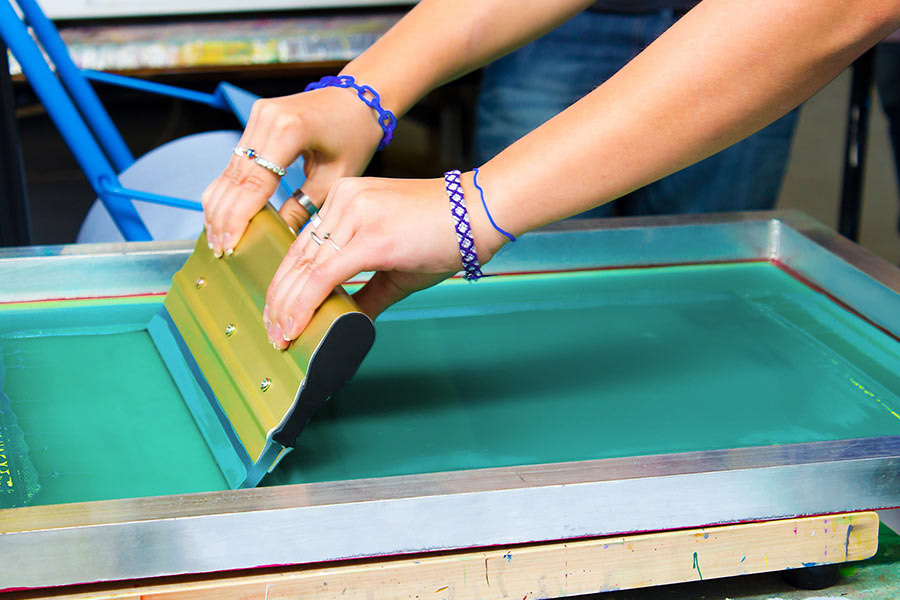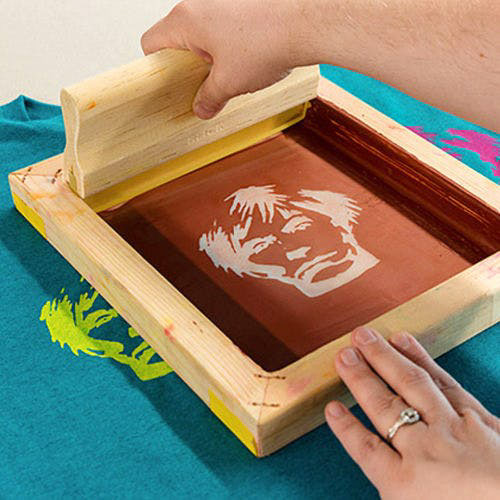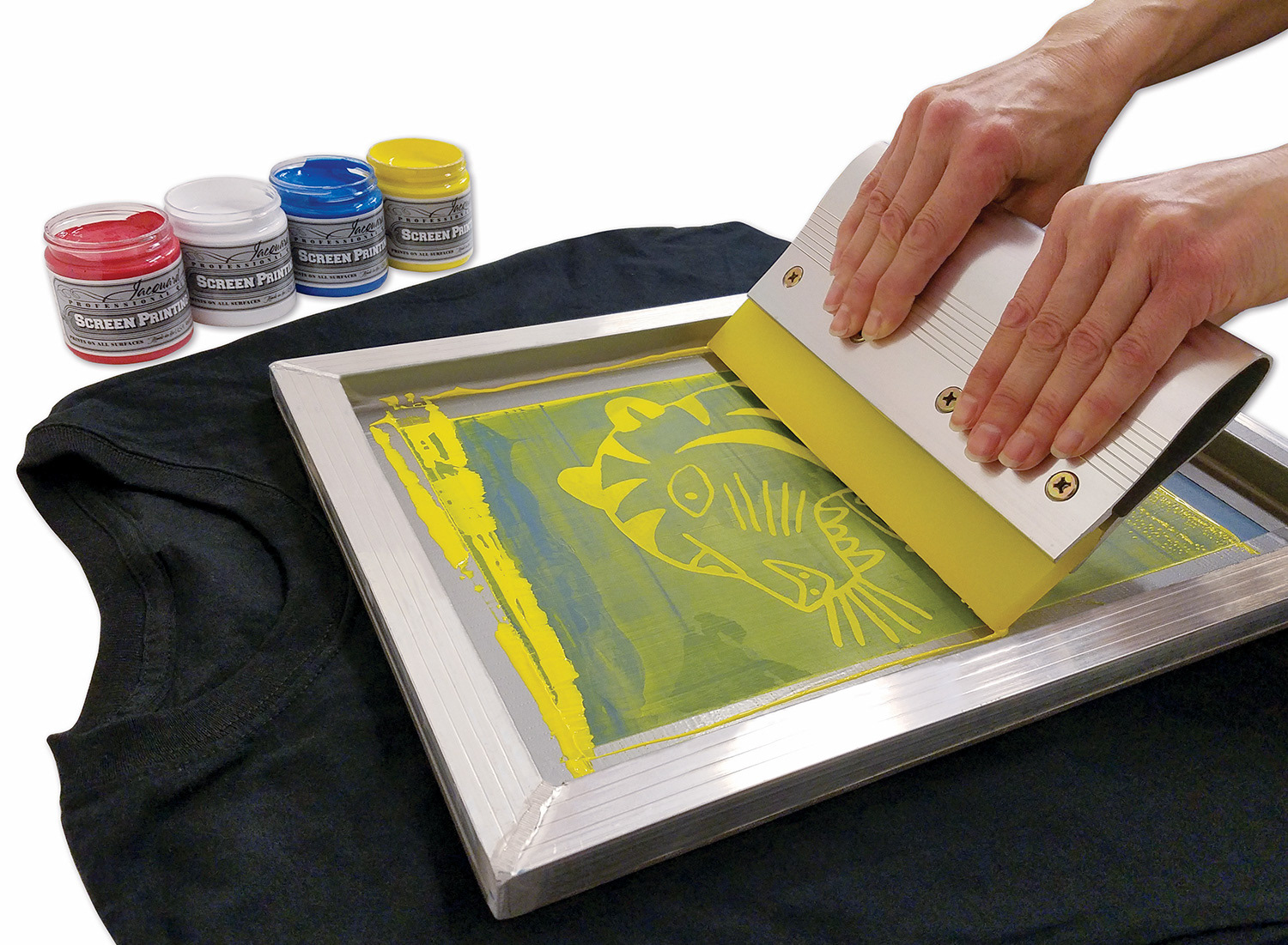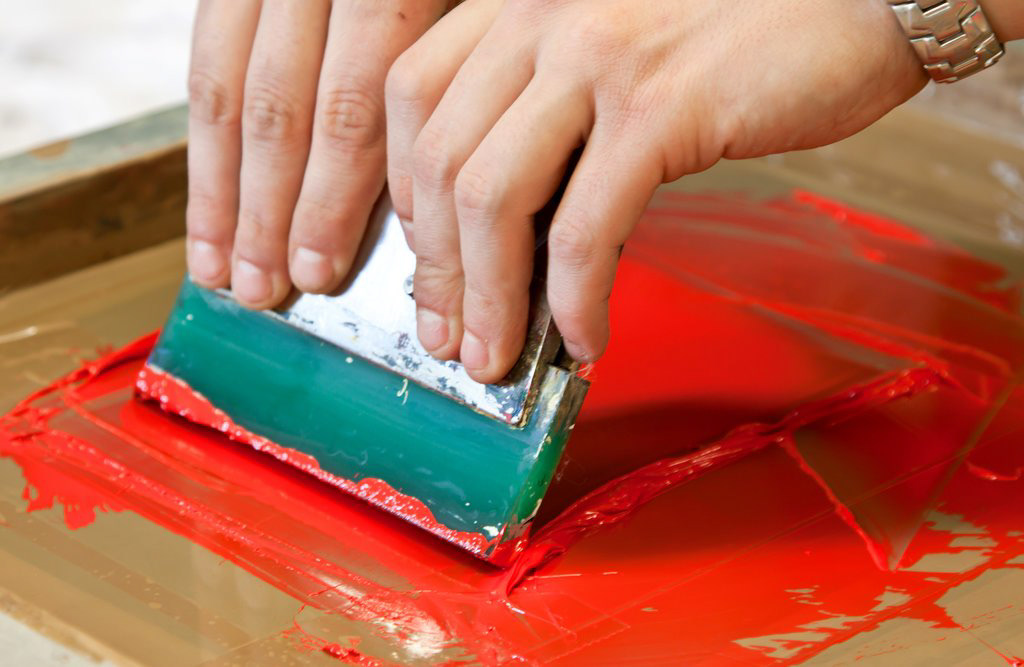History
The origins of screen printing go back to ancient China. The inhabitants of that time used silk nets, which were stretched on the frame and served as templates for coloring patterns on various textile surfaces. Interestingly, the ancient literature, which is the first to describe screen printing, speaks of the use of human hair or animal hairpins to make a net for screen printing at the time. Over time, silk replaced them. Another mention of screen printing comes from the 17th century, when kimonos were used to decorate in Japan. Over the centuries, the process of screen printing has undergone only minimal changes, which speaks of its timelessness and practicality. The rise of screen printing occurred at the beginning of the 20th century, when this technique broke into Europe and the USA on a large scale.
The principle
Screen printing consists in pushing the ink through the permeable places of the stencil (mesh). These permeable sites, which are the motif or pattern of the print, are formed on the screen by a photosensitive emulsion which hardens upon illumination. The emulsion is applied to a sieve under which the printed pattern is placed. Subsequently, the emulsion-coated and patterned screen is illuminated. The parts of the net that are covered by the printed pattern when illuminated will remain permeable, the rest will not let the color through.






